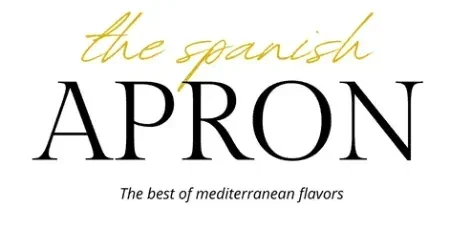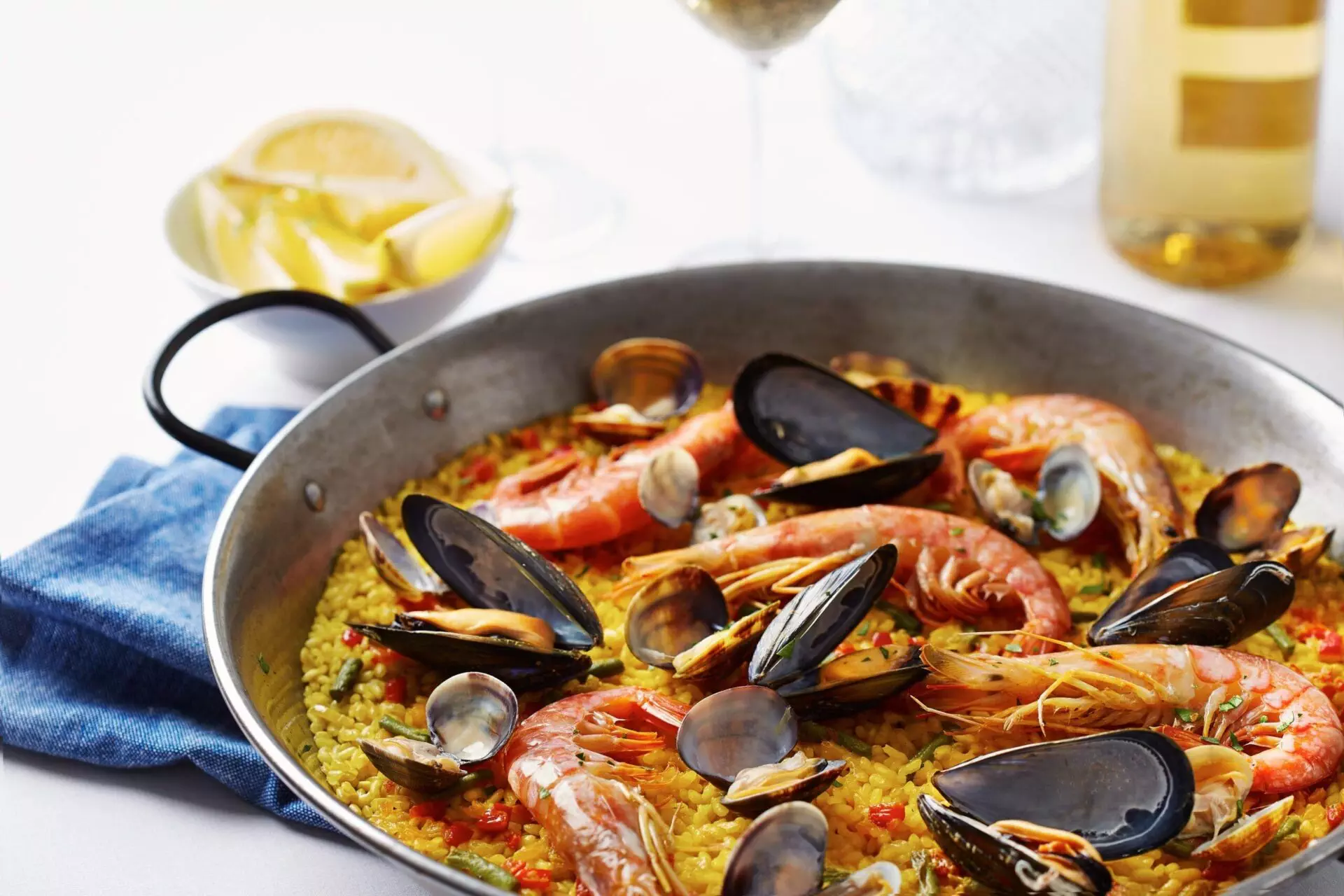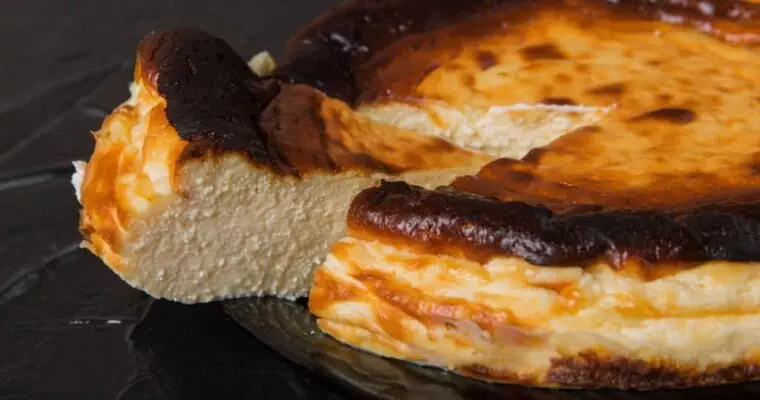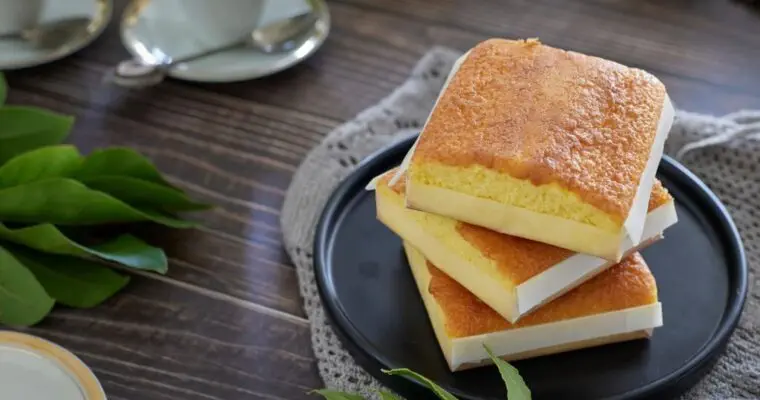Welcome to “The Authentic Spanish Paella,” an exploration of the iconic dish that has captivated taste buds around the world. This article will take you on a gastronomic journey through the rich history, tantalizing variations, and essential tips and tricks to create the perfect paella. Whether you’re seeking the traditional Spanish paella recipe or an easy-to-follow version, this guide is your passport to mastering the art of this beloved culinary masterpiece. Prepare to immerse yourself in the flavors, aromas, and cultural significance of “The Authentic Spanish Paella” as we unlock its secrets together.
Table of Contents
The Traditional Spanish Paella
History: Embark on a trip back in time to the 18th-century Valencia region, where paella originated. Originally a humble dish for farmers, it combined readily available ingredients like rice, chicken, rabbit, and even snails. Over time, paella evolved into a beloved symbol of Spanish gastronomy.
Nutritional Benefits: Did you know paella can be surprisingly nutritious? Packed with protein from seafood or meat, carbohydrates from rice, and vitamins from vegetables, paella offers a well-rounded meal. Explore the variations below to find options that suit your dietary needs.
The Original Paella Variations
Paella isn’t a one-size-fits-all dish! Here are some enticing variations to tantalize your taste buds:
- Paella Valenciana: The traditional recipe, featuring chicken, rabbit, snails, and green beans.
- Seafood Paella: A delightful medley of fresh seafood like shrimp, mussels, and clams takes center stage.
- Mixed Paella: Craving both meat and seafood? This paella offers a harmonious fusion of flavors.
- Vegetarian Paella: A vibrant display of seasonal vegetables like artichokes, bell peppers, and peas creates a flavorful plant-based option.
The Classic Spanish Paella: Tips and Tricks
Mastering paella is easier than you think! Here are some secrets to achieving paella perfection:
- The Pan: Use a wide, shallow pan called a paellera for even heat distribution.
- The Rice: Spanish paella rice varieties like Bomba or Calasparra are your best friends. They hold their shape and soak up flavors beautifully.
- The Golden Touch: Authentic Spanish saffron adds the signature golden color and unique flavor to your paella.
- The Secret Crust: Don’t stir the rice excessively after adding broth. This allows the formation of a crispy, flavorful crust called socarrat.
- The Finishing Touch: Let your paella rest for a few minutes before serving. This allows the flavors to marry and come alive.
Spanish Recipe Inspiration Beyond Paella:
Spain boasts a diverse culinary landscape with regional specialties waiting to be explored. Here are a few ideas to expand your Spanish food journey:
- Gazpacho: A chilled Andalusian soup made with blended tomatoes, vegetables, garlic, and olive oil. Perfect for a hot summer day.
- Tortilla Española: A savory Spanish omelet made with potatoes, onions, and eggs. A versatile dish enjoyed hot or cold.
- Patatas Bravas: Crispy fried potatoes drizzled with a spicy tomato sauce and aioli. A popular tapas bar staple.
- Gambas al Ajillo (Shrimp with Garlic): Simple yet flavorful shrimp sauteed in olive oil with garlic and chili flakes.
- Croquetas: Crispy fried bechamel croquettes filled with various ingredients like ham, cheese, or mushrooms. Another popular tapas option.
Desserts:
- Crema Catalana: A rich and creamy custard dessert similar to crème brûlée, with a caramelized sugar topping.
- Churros: Long, deep-fried dough sticks served hot with a chocolate dipping sauce.
- Tarta de Santiago: A traditional almond tart from Galicia, often dusted with powdered sugar and featuring the silhouette of the Saint James cross.
Mastering the art of traditional Spanish paella opens up a world of culinary delights. With its rich history, tantalizing variations, and easy-to-follow recipe, you can embark on a gastronomic journey right in your kitchen. Remember these tips and tricks to create a memorable paella experience, and savor the vibrant flavors and textures that make this dish truly exceptional.
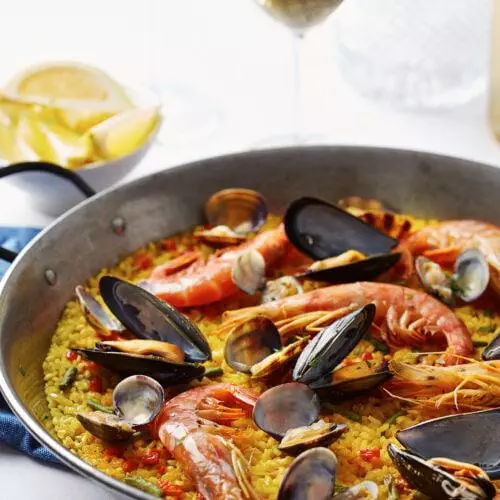
The Authentic Spanish Paella: History, Variations, Tips, and Tricks for a Delicious Culinary Adventure
Equipment
- 1 Paella pan Large skillet
- 1 Oven optional
Ingredients
- 2 cups Spanish short-grain rice (such as Bomba or Calasparra)
- 4 cups Chicken or vegetable broth
- ½ lb Boneless chicken cut into bite-sized pieces
- ½ lb Shrimps peeled and deveined
- 1 Onion choped
- 4 Cloves of garlic minced
- 1 Red bell pepper chopped
- 1 Green bell pepper chopped
- 1 Can of diced tomatoes (14 oz)
- ½ cup Green peas
- ¼ cup Fresh parsley chopped
- ¼ cup Olive oil extra virgin
- 1 tsp Saffron threads
- Salt and pepper to taste
Instructions
- Preheat the oven to 375°F . (190 ºC)
- In a large paella pan or oven-safe skillet, heat olive oil over medium heat. Add chicken and cook until browned, about 5 minutes. Remove chicken from pan and set aside.
- Add onion, garlic, and bell peppers to the pan and cook until softened, about 5 minutes.
- Add rice to the pan and stir to coat with the vegetable mixture. Add saffron and stir to combine.
- Add chicken broth and diced tomatoes to the pan and stir to combine.
- Add chicken back to the pan and stir to combine.
- Bring mixture to a boil, then reduce heat to low and let simmer for about 10 minutes.
- Add shrimp and peas to the pan and stir to combine. Sprinkle salt and pepper to taste.
- Transfer pan to the oven and bake for 15-20 minutes or until the rice is cooked and the liquid has been absorbed.
- Remove from oven and let sit for a few minutes. Garnish with chopped parsley and serve hot.
